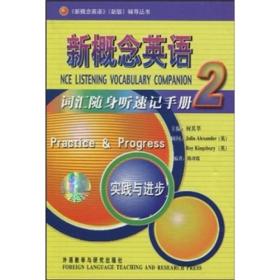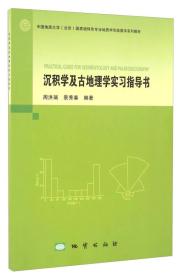
新编实用英语语音学
正版二手图书 循环利用!
¥ 5.8 1.5折 ¥ 39 九品
库存118件
北京通州
认证卖家担保交易快速发货售后保障
作者何善芬 著
出版社北京师范大学出版社
出版时间2016-10
版次1
装帧平装
货号9787303193509
上书时间2024-08-21
- 在售商品 暂无
- 平均发货时间 9小时
- 好评率 暂无
- 最新上架
商品详情
- 品相描述:九品
图书标准信息
- 作者 何善芬 著
- 出版社 北京师范大学出版社
- 出版时间 2016-10
- 版次 1
- ISBN 9787303193509
- 定价 39.00元
- 装帧 平装
- 开本 16开
- 纸张 胶版纸
- 页数 289页
- 字数 392千字
- 正文语种 简体中文,英语
- 【内容简介】
-
英语语音作为英语语言的一个重要组成部分,近年来有了一些新的发展和变化,特别是元音的变化加速。本书结合我国英语教学的实际和现状,在此次修订中将该学科的新观点、新理论和新知识融入书中,帮助学生准确掌握现代英语的标准发音和语音体系。本书理论阐述简明扼要,章节安排更趋合理,形式灵活,具有较强的针对性。
- 【作者简介】
-
何善芬,1962年于湖南师范大学英语系,留校任助教、讲师、副教授,1993年晋升为教授。从事英语40多年,其学术研究主攻方向为英语语音学、音系学及英汉语音对比研究。退休后,侨居美国,仍笔耕不已,2015年新编实用英语语音学问世。主要著作:1.实用英语语音学,1985年北京师范大学出版社出版。该书历经两版,印刷29次,发行量达22万册。2.英汉语言对比研究,2002年上语教育出版社出版。该书系1996年重量科学研究课题英汉语言对比研究的主要成果。主要:1.英语语音中英汉对比的几个方面1987年,外国语上国语学院学报2.英语超音段音位及其辨义功能1989年,外国语上国语学院学报3.英汉音节结构对比1997年,外语研究民靠前关系学院学报4.英汉语语流音变探微1998年,外语与外语大连外国语学院学报5.英汉轻重音对比研究1999年,外语与外语大连外国语学院学报6.现代美国语音变探究2000年,语言与翻译研究会科学出版社7.论英汉语音渡、停顿及其语义功能2002年,语篇语言功能语言中山大学出版社。 - 【目录】
-
Preface
Teaching Tips and Suggestions
List of Phonetic Symbols and Signs
Part Ⅰ Introduction
Chapter 1 Introduction
1.1 Why should we learn English phonetics?
1.2 Problems about pronunciation
1.3 Phonemes and phonetic transcription
Chapter 2 Organs of Speech andClassification of Speech Sounds
2.1 Organs of speech
2.2 Classification of speech sounds
Part Ⅱ English Phonemes
Chapter 3 English Vowel Phonemes
3.1 The cardinal vowels
3.2 Monophthongs and diphthongs
3.3 English monophthongs
Chapter 4 English Diphthongs
4.1 The closing diphthongs
4.2 The centring diphthongs
Chapter 5 English Consonants (Ⅰ) ; Plosives
5.1 Classification of consonants
5.2 Plosives
Chapter 6 English Consonants (Ⅱ) : Fricatives andAffricates
6.1 Fricatives
6.2 Affricates
Chapter 7 English Consonants (Ⅲ) : Nasals, Lateral andApproximants
7.1 Nasals
7.2 Lateral /1/
7.3 Approximants
Chapter 8 The English Syllables andConsonant Clusters
8.1 What is a syllable?
8.2 The English syllable
8.3 How to read consonant clusterscorrectly?
Part Ⅲ Aspects inConnected Speech
Chapter 9 Word Stress
9.1 What make.s a syllable prominent?
9.2 Levels of stress
9.3 Stress patterns of simple words
9.4 Word—class pairs
9.5 Stress of compound words
Chapter 10 Sentence Stress
10.1 Sentence stress and its functions
10.2 Which word sare usually stressed?
10.3 Stress for contrast or specialemphasis
10.4 In special cases, contentwords are unstressed
10.5 Function words may be stressed incertain cases
Chapter 11 Weak Forms
11.1 Weak forms—normalforms
11.2 Weak forms of words differ from theirstrong ones
11.3 How are the weak forms used?
11.4 The use of strong forms
Chapter 12 Rhythm in English Speech
12.1 Rhythmin English speech
12.2 Rhythm units (or stressgroups)
12.3 English has a stress—timed rhythm
12.4 Rhythm and vowel reduction
12.5 Influence of rhythm upon word—stress
12.6 The influence of rhythm onsentencrstress
12.7 Summary
Chapter 13 Liaison (orlinking)
13.1 Linking the final consonant to theinitial vowel
13.2 Linking a final /r/ to initialvowels
13.3 Linking final vowels to initial vowels
Chapter 14 Assimilation
14.1 What is assimilation?
14.2 Direction of assimilation
14.3 Assimilations which frequently takeplace in spoken English
Chapter 15 Elision and Contraction
15.1 Types of elisions
15.2 Elisions frequently taking place inrapid speaking
15.3 Common contractions
15.4 Negative contractions
Part Ⅳ English Intonation
Chapter 16 Tone Unit and the Tonic Stress
16.1 The sense group and tone group
16.2 Tone—unit and tonic stress
16.3 The position of the tonic stress
16.4 Changes in focus: Newinformation
Chapter 17 The Structure of Tone Unit
17.1 What is intonation?
17.2 The Structure of the intonation—unit
17.3 Reading the intonation marks
Chapter 18 The Uses of the Tones (Ⅰ)
18.1 The falling tone
18.2 The rising tone
Chapter 19 The Uses of the Tones (Ⅱ)
19.1 The falling—rising tone
Chapter 20 Miscellaneous Patterns
20.1 The accidental rise
20.2 Intonation of compound sentences
20.3 Intonation of appositives
20.4 Intonation of the parenthesis
20.5 Intonation of reporting phrases
20.6 Intonation of the complex sentencecontaining an object clause
20.7 Intonation of attributive clauses
Chapter 21 Functions of Intonation
21.1 The function of organizing information
21.2 The attitudinal function
21.3 The communicative function
21.4 The grammatical function
Appendix 1 Suggested Key to the Exercises
Appendix 2 General Terms of English Phonetics
Appendix 3 Pronunciation of AmericanEnglish
Appendix 4 Intonation of American English
Bibliography
点击展开
点击收起
相关推荐
— 没有更多了 —














以下为对购买帮助不大的评价